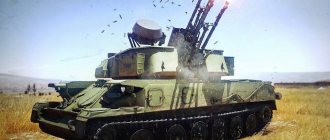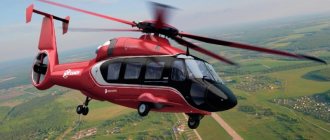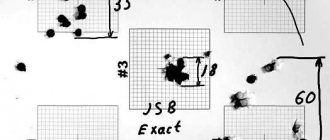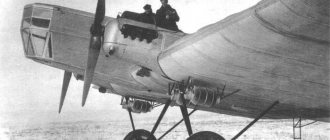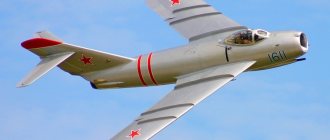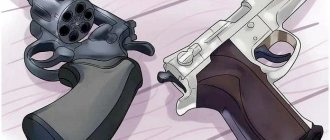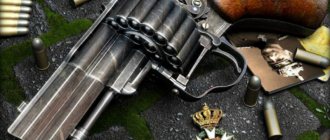Important historical events are associated with the activities of outstanding personalities. Many of them become legends during their lifetime. But people do not always preserve the memory of their heroes. This is how Pavel Grokhovsky, a brilliant aircraft designer and organizer, was consigned to oblivion.
Courage and creative fervor helped him realize plans that seemed unrealistic at that time. Most of them were implemented much later, after his death, or served as the basis for modern inventions.
Childhood and adolescence
The hometown of Pavel Ignatievich Grokhovsky is Vyazma, Smolensk province (now Smolensk region). But he received his primary education in Tver, where he moved with his family. According to eyewitnesses, even in his youth the boy was distinguished by fearlessness and audacity: “... he was a real daredevil, did not recognize any authority...”
Even older guys were afraid to get involved with him.
The First World War began. Not having time to graduate from college, Pavel voluntarily went to the front as soon as he turned 16 years old. Later, after returning home, the future famous aircraft designer was captivated by revolutionary ideas.
Paul's biography is also connected with the Civil War. When the country was gripped by the struggle between reds and whites, the young man did not stand aside. At the age of 20, Pavel Ignatievich Grokhovsky became a company commander and a communist, participated in battles and reached Persia. He fought with Kolchak’s and Denikin’s troops, with Wrangel’s troops.
“In Voronezh, the navigator’s wife came on stage...”
– How did this song come to you, Edita Stanislavovna?
– Oscar Feltsman wrote music based on the poems of Robert Rozhdestvensky, who was in Berlin and learned there about the feat of the pilots. In 1967, Feltsman invited me to be the first to perform this song. I still sing it, and it seems to me that it does not lose its relevance. Songs like this are not born every day.
“That’s why the audience receives her so warmly.”
– They were always well received. Hurray! In 1968, at the festival of youth and students in Sofia, “Huge Sky” received several awards - a gold medal and first place in a political song competition, a gold medal for performance and poetry, a silver medal for music...
– Can you remember your most memorable performance?
– In Voronezh, a woman came on stage, and the whole audience stood up, applauding. This was the wife of navigator Yuri Yanov. The same thing happened in Rostov, where Boris Kapustin’s family lived.
– Do today’s youth know who the song is about?
– I think it’s unlikely... Yes, the young people don’t even know me. Grandson Stas is asked who Edita Piekha is. Although I have been performing for 58 years.
Post-war years
After the war, the young man became seriously interested in airplanes and design. He studied at the Yegoryevskaya school, the Kachinskaya school, and then at the Borisoglebsk Aviation School.
Afterwards he was sent to a higher military educational institution - the air combat aviation school in Serpukhov - “Strelbom”. This unofficial name, derived from the previous one, combined two integral components of the professional skills of combat pilots - “shooting” and “bombing”.
Pilots who already had serious training were sent here. Many military personnel graduated from this unique school, who later became famous aircraft designers, military leaders and test pilots.
Tests of prototype aircraft were carried out here, and after the flights the equipment was refined.
Later, Colonel Pavel Grokhovsky was appointed to the position of test pilot at the Air Force Research Institute, which he combined with the post of head of the design department. In subsequent years, he held leadership positions, first at the design production bureau, then at the Experimental Institute. And all this time he continued to invent.
To implement the plan for the urgent modernization of the Armed Forces, they were looking for smart and capable specialists, among whom was Pavel Grokhovsky. He was given the task of developing new equipment to create a new type of troops - airborne assault.
OUR PEOPLE
Yangel, Mikhail Kuzmich Designers
Soviet designer of rocket and space systems
Yakushev, Pyotr Gerasimovich Designers
Soviet designer of small arms, candidate of technical sciences
Yakovlev, Vladimir Mikhailovich Designers
Soviet aircraft engine designer
Yagupov, Evgeniy Aleksandrovich Designers
Soviet mortar designer
Yavorsky, Vasily Nikolaevich Designers
Soviet scientist, military designer, engineer-colonel, professor, Doctor of Technical Sciences
Yukhnin, Evgeniy Ivanovich Designers
Soviet designer-shipbuilder, Doctor of Technical Sciences, chief designer and head of TsKB-5
Yuryshev, Nikolai Nikolaevich (Lieutenant General) Designers
Soviet military leader, weapons designer
Yurasov, Igor Evgenievich Designers
Soviet designer of rocket and space technology, deputy S
Clay bombs and sand dummies
One of Grokhovsky's first inventions was the creation of a silicate bomb in 1927. Flight commander Pavel Ignatievich trained young pilots in aerobatic maneuvering, aerial shooting and bombing.
Bombs for training flights were made from cement, which was produced in small quantities in the country. Foreign ones were purchased for foreign currency, which is why they had to save money and exercises were often carried out “in vain.” Pavel realized the low effectiveness of such training, but high results were needed.
And he found an ingenious and at the same time simple solution - to make bombs from clay and fill them with tinted chalk.
Before Grokhovsky invented the parachute, they were not produced in the country, but were purchased in America (“Irwin”). Although they needed serious improvement, since they did not ensure the safety of people. For some period, parachute jumping was even banned in the USSR. Grokhovsky worked on the parachute in two directions - ensuring the highest possible safety and reducing the cost of production, which would allow the transfer of a large number of people and equipment.
For production, Grokhovsky chose inexpensive fabric and then improved the design. The tests were carried out on 12 dummies (6 with Irwin parachutes, 6 with Grokhovsky parachutes), which were filled with sand and dropped from airplanes. Pavel Ignatievich's invention was successfully tested. Since 1930, mass production of parachutes began in the USSR.
Soon they began to be made from silk because it is more durable and does not cake. And the designer was already working on a device for automatic deployment of the reserve parachute. But they were able to realize the idea under his successor A.I. Privalov.
Refusal
Altitude 4000. A pair of Yak-28s, having broken through the dense clouds after takeoff, glided in the icy void pierced by the dazzling sun above the snow-white clouds. Heading to Zerbst! Ten minutes of flight had already passed when the leading Yak suddenly veered sharply to the right.
He began to lose speed and fall through.
On the tape recording of the radio exchange preserved in the investigation materials there was a short recording:
Kapustin to the follower:
- Three hundred and eighty-three, move to the right!
On command, the wingman performed a maneuver, avoiding the leader’s aircraft, which was losing speed and control, and took the lead. Kapustin's Yak-28 immediately fell behind.
After a couple of seconds, Podberezkin asked:
- Three hundred and sixty-seven, I don’t see where you are?
- Three hundred and eighty-three, route according to instructions! I'm coming back! – responded Kapustin.
Podberezkin continued the flight, but after a few seconds, worried about the commander, he again asked the leader:
-...sixty-seven, how are you?
Silence.
- Three hundred and sixty-seven, why don’t you answer?..
The wingman did not know that the impossible had happened: one engine of Kapustin’s plane failed, and a few moments later the second one stopped working. This simply could not happen! The Yak-28 engines are two units independent from each other, each located on its own plane. As the commission will establish, the cause was a “design and manufacturing defect.”
Alas, this was not surprising.
The first equipment in the history of airborne assault
At that time there was no aviation equipment to land a large number of paratroopers. The designer decided to place a cradle under the wings of the aircraft, nicknamed “Grokhovsky’s coffin” because its shape resembled this particular object. The device worked as follows: the pilot pressed a lever that turned the cradle over, and people flew down.
But the invention was not used because it did not provide the required level of safety.
Then the designer developed the G-63 glider, on board which could accommodate 16 people and 500 kg of cargo. Later, Pavel Ignatievich proposed a model of a glider capable of transporting up to 50 soldiers. At that time, this idea seemed unrealistic to many and did not receive support.
In 1931, Pavel Ignatievich developed the design and created an airbus, a container on wheels. It was attached to the bottom of the aircraft, and when the pilot lowered the flying machine to a level of 2-3 meters above the ground, the cabin separated and rolled along the ground for several meters.
Grokhovsky’s idea was that in this way the troops could be landed in a group, in a heap, and this would give a significant advantage: it would allow them to quickly assemble and engage in battle.
How the disaster happened
So, if we take the circumstances of the plane crash itself, then everything happened like this: on Christmas Eve 1950 in Sverdlovsk there were frosts, abnormal even for those years: the temperature at night dropped to −39 degrees.
The weather was similar throughout the Middle Urals, and it was complicated by bad weather conditions - all planes were sent to land at Koltsovo airport, which at that time was overloaded. Due to such a queue, Koltsovo air traffic controllers allowed the packed passenger planes to board first, and the small military Li-2 was forced to hang out in the so-called “holding area” and wait for landing. It was difficult to endure, the passengers huddled in the back of the plane, and it was even more difficult to pilot it.
Li-2 aircraft identical to the one that crashed
At the same time, the Air Force had a chance to avoid disaster: during the flight from Moscow, the plane made a transfer to Kazan (a common practice for aviation in those years), and the wait was prolonged - the Urals did not receive planes due to frost. Then the Air Force playing coach Boris Bocharnikov, after much persuasion, begged permission to continue the flight from Vasily Stalin - although Chelyabinsk could have been reached by train. However, Bocharnikov clearly wanted to have time for “acclimatization,” which he spoke about to the leader’s son after his last match.
Notes
- ↑ https://bessmertnybarak.ru/Grokhovskiy_Pavel_Ignatevich/
- ↑ Grokhovsky Pavel Ignatievich memory page on the website of victims of repression
- Pugachev A. “The Forgotten Father of the Soviet Landing.” "Pravda", newspaper. No. 81 from July 31 - August 2, 2022.
- GASO. F.48 Op.4 D.9 Part 1. The metric book of the Smolensk Spiritual Consistory for recording those born in 1899. in the church at the Arkadyevsky Monastery in Vyazma.
- .
- Grokhovsky Pavel Ignatievich. Official website of BVVAUL.
- ↑ AIR BUS OF PILOT GROKHOVSKY
- .
- ↑ G-37, multi-role transport aircraft. Page on the aviation encyclopedia portal airwar.ru.
- M. Orlov//Last hope... About the PG-61 biplane. "Wings of the Motherland", magazine. 2002, No. 3 Archived September 23, 2022 on the Wayback Machine.
- ↑ Vladislav Gribovsky.
They were the first // Technology for Youth: magazine. - 1990. - No. 3. - pp. 63-65. - ISSN 0320-331X. - M. Kaminsky.
In the sky of Chukotka. Notes of a polar pilot.. - Moscow: Young Guard, 1973. - P. 9-94. — 368 p. - Semyon Fedoseev.
Parachute landing equipment "Universal" // "Equipment and weapons": magazine. - 2010. - No. 8. — P. 4. - A man with a winged soul // Fifth Rome Publishing House. — 2022. — August 02. Archived from the original on August 6, 2022.
- P. I. Grokhovsky’s page in the “Last Address” database poslednyadres.ru.
- Dolgoprudnensky City Council of Workers' Deputies. Executive committee. Decision of July 30, 1974 No. 220 “On the installation of a memorial plaque at house 23 on Parkovaya Street in the village. Kotovo."
- A memorial plaque to Pavel Grokhovsky was unveiled. "Tverskaya Gazette". 2012-08-02 Archived November 15, 2022 at the Wayback Machine.
- Vyazemsk local historians visited the second homeland of the inventor Pavel Grokhovsky, a native of the Vyazemsk land. Official website of Vyazma. 2013-12-01.
The difficult fate of the fighter
Despite the patronage of the top, the I-200 fighter, which received the MiG-1 brand after its designers (Mikoyan and Gurevich first), was crude, and Polikarpov knew about it, but remained silent, placing further responsibility for the fate of the machine on the competitors who had surpassed him.
Perhaps this is why the MiG-1 was constantly plagued by various kinds of defects, especially in wartime. One of the best and most experienced Air Force fighter pilots, who mastered the MiG-3 aircraft (modification of the MiG-1) for combat use, the commander of the 124th Fighter Regiment, Major Polunin, said: the MiG-1 - MiG-3 aircraft contain a number of manufacturing and design defects . In addition, it is difficult for the average pilot to master the technique of piloting these aircraft, and not without risking his life. It is dangerous to fly them and even more so to use weapons.
At the end of 1941, this fighter was taken out of production. And Artem Mikoyan happily continued to head the design bureau, which until the end of the war did not give the front a single production vehicle.
Literature
- Vladimir Kotelnikov.
. desantura.ru (May 10, 2005). Retrieved November 14, 2022. - Sensitively I. E.
Goddess of fortune of Divisional Commander Grokhovsky // Bridge through time. - M.: Politizdat, 1989. - 333 p. — 100,000 copies. — ISBN 5-250-00805-4. - Dmitry Fadeev.
. "Local time. Tver", newspaper (August 8, 2012). — Biographical sketch. Retrieved November 14, 2022. - . To the 115th anniversary of his birth.
- Vitaly Karatsupa.
.
Fiction Archive
(2016). — Biographical sketch and bibliography. Retrieved November 15, 2022. - V. B. Kazakov.
.
bessmertnybarak.ru
(2018). — Biographical story about P. I. Grokhovsky. Retrieved June 12, 2022.
Takeoff
On the morning of April 6, 1966, Captain Boris Kapustin’s flight received an order to transport the new Yak-28P to Zerbst, to the base of the 35th Fighter Aviation Regiment. It was a fabulous car! The first Soviet fighter-interceptor, capable of destroying the enemy at low altitudes, not only on catch-up, but also on collision courses. A link of interceptors was transported “along the chain” to Germany from the Union, where they were assembled at the Novosibirsk Aviation Plant.
“On April 3, they unexpectedly landed here in Finow, although there were only 15 minutes of flight left to Zerbst,” recalls Galina Andreevna Kapustina, the widow of the flight commander. “When Boris came home, he admitted: he could barely make it, the engine was acting up.
The planes were not allowed to leave the airfield for three days; technicians were fiddling with them. And only on April 6 the flight to Zerbst was allowed. Everything about everything - from taxiing to the runway to landing - takes forty minutes. For first-class pilots, it's a cakewalk.
The truth about the life and death of the Panfilov hero, political instructor Vasily Klochkov
The lacings on the high-altitude suits are tightened, all zippers are fastened, helmets are put on, aircraft technicians, like caring nannies, routinely help pilots take seats in the cockpits, check all connections and connectors, remove covers and plugs. At 15.24, a pair of brand new interceptors, still smelling of varnish and nitro paints, flooded the airfield field with the roar of their engines, quickly ran along the runway and soared into the sky.
Flight commander Captain Boris Kapustin is the leader, Captain Vladimir Podberezkin is the wingman. The navigators on board: Kapustin has senior lieutenant Yuri Yanov, Podberezkin has captain Nikolai Lobarev.
While the flight breaks through the low clouds, we present the certification that the regiment commander, Hero of the Soviet Union, Lieutenant Colonel Koshelev, gave to Kapustin in November 1965, when he was promoted to the post of deputy squadron commander: “Kapustin flies the Yak-18, UTB-2, Il-28, Yak aircraft -12 and Yak-28L with R11AF2-300 engine. Total flight time – 1285 hours. In 1964, he successfully retrained on the Yak-28, and quickly mastered the retraining program. Flight time on the Yak-28 is 247 hours. Prepared for combat operations day and night in the established minimum weather from low, high altitudes and from the stratosphere at supersonic speed. As an instructor, trained day and night in minimum weather conditions. He flies confidently and is proactive in the air...”
Navigator Yuri Yanov is also brilliantly certified: “He flies Li-2, Il-28, Yak-28. How a navigator is prepared for combat operations with the Lotos system, at low altitudes - with the OPB-16 sight. Total flight time - 1030 hours, on the Yak-28 - 185 hours. In 1965, he flew 125 hours and completed 30 bombing missions with an average rating of 4.07. Loves to fly. In the air he is calm and proactive. Very serious and businesslike...”
They flew, were friends in the heavenly distance, they could reach the stars with their hands. Trouble came like tears to the eyes: once in flight, once in flight, once in flight the engine failed...
The country's best goalkeeper and a super trio of strikers died
Perhaps the best goalkeeper in the country at that time, Harijs Melloops, died in a plane crash. All Soviet hockey players at that time were involved in some other sport (“Canadian” hockey was only three years old at the time of the Air Force disaster). Mellups began his career as a football player, but was also an excellent boxer - he won the first post-war Latvian championship. It was he who played in the Moscow national team (and in fact the USSR national team) in the 1948 matches against the Prague LTC.
This is what Anatoly Tarasov wrote about Mellops in his book: “It’s not a sin for the current gatekeepers to learn from his courage and perseverance in any situation, as well as the ability to instill calm and confidence in partners. Melloops' goalkeeping technique was brought to the point of automaticity. True, while watching the Riga residents’ training from the outside, we noted that Hariy was not too fast. But this is from the outside. In the game, precision and economy in the execution of technical techniques allowed Melloops to win against much faster attackers.
His ability to work even in official meetings deserves special mention. Having missed the puck, he did not grab his head, did not attack the defenders with claims, as other goalkeepers do now. He was simply right there on the ice, unashamed of thousands of spectators, repeating the failed technique, finding out for himself what he had done wrong.”
One of the best trios of early Soviet hockey also played in the VVS: Zdenek Zikmund - Ivan Novikov - Yuri Tarasov, who also played against LTC in 1948. Zikmund (Czech by birth, but raised in Russia) and Novikov played excellent tennis: Zdenek was the second tennis player in the country in 1948, won six USSR championships in pairs (and his partner was Nikolai Ozerov). And Novikov played with Zikmund in trade union competitions.
Again, a word from Tarasov: “In hockey, Zdenek was the soul of the troika, the organizer of attacks. Next to him on the ice were Ivan Novikov, fast, with a shot that many could envy then, and my fearless younger brother, Yuri, who always fought with passion until the last second of the game. But, alas, their life was short-lived.”
Yuri Tarasov with his brother Anatoly
He also quotes Anatoly Kostryukov, who then played in “Wings of the Soviets”: “When the Tarasovs, playing in different teams, became rivals and competed in fights, it was an exciting spectacle. They literally fought against each other, sparing no effort." One day, Yuri was late for a meeting of the team coached by his brother - and Anatoly gave the younger one a beating.
They tried to hide the death of Yuri Zhiburtovich: at that time, announcers called players only by last name, so his brother, Pavel, who served in the air defense forces and had played hockey only once before, was urgently called to the Air Force. The younger brother played his first match when the elder brother had not yet been buried - but at the same time his career lasted 14 years, and he joined the first USSR national team.
Yuri might not have flown either. Biographer Vsevolod Bobrov describes it this way: “Zhiburtovich lived in one of the houses behind the Dynamo stadium, not far from the Central Airfield, located on Leningradskoe Highway, from where the plane with the Air Force team was supposed to take off. And yet, Yuri was clearly late for the flight - this, however, happened to him quite often, everyone knew it, they even called him “kopushnik”. To catch the plane, Zhiburtovich ran with all his might through Petrovsky Park and this time, although lathered, he arrived on time.”
Until 1979 and the death of Pakhtakor, this disaster remained the worst associated with athletes. Unfortunately, if it was already impossible to keep silent about the death of the Uzbek team and they were carried out with dignity, then the players who were known throughout the Soviet Union could not even be honored immediately after their death. As Viktor Shuvalov said in the same interview: “It was a strange time. For example, our disabled people are invited to competitions, and the answer from the Soviet Union is: “We don’t have disabled people.” Well, isn’t it nonsense?”
Alas, for posterity the victims also remained little known for a long time - the USSR national team did not yet exist at the time of the disaster, and external successes still meant much more to history than internal ones. Mellups, Zhiburtovich, Zikmund, Tarasov Jr. and many others seemed to evaporate for a long time, and their names returned only in the 70-80s - and only to be forgotten again another ten years later.
